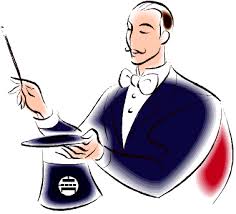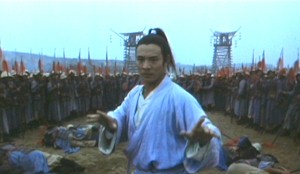 |
| Zdenek Matl sensei and Eric Pearson |
I would humbly like to invite you into the world of traditional Japanese martial arts with a combination of traditional and progressive teaching methods. For me it has been the most challenging and fulfilling artistic journey of my life.
We train primarily in progressive non-sports Tomiki lineage Aikido, ground fighting jujutsu techniques, Judo, Daito Ryu Aiki Jujutsu, and knife training. Silat and Systema based drills are also a a part of our training now. Basically, we train in soft, technical martial arts. We train safely, pragmatically, ethically and in good humor. While we respect Japanese influences we do not embrace the ritual culture. We respect diversity and work with physical limitations of each student to design a study that is appropriate for their abilities.
The class is taught by Eric Pearson. Largely Eric cares little for ranks and the ranking game. When searching for a teacher remember ranks are largely political ties. Go see a group and teacher for yourself to decide. Eric sees himself as a passionate educator and community builder who feels martial arts is a great method of personal cultivation.
Different organizations and teachers have ranked him as following -
Aikido - Although aikido is just one art form, different organizations have presented Eric with varying grading or ranks. He holds a rokudan, 6th degree, in Tomiki lineage Aikido from The Kaze Uta Budo Kai. He has received a 5th dan in Aikido from his long time teacher Russell Waddell, and a 2nd degree in Aikido from the American Tomiki Aikido Association. Take your pick.
Despite the impressive looking pedigree his Shiho Nage technique still needs work. He is working on it.
Daito Ryu AikiJujutsu He also has an associate instructor rank in from the Shofukan (Matsuda Lineage) under Ota Ikou Sensei when he trained for three years in Numata, Japan. He periodically studied with Howard Popkin sensei and Joe Brogna sensei, of the Ginjukaifrom 2012-2017 - he holds no rank in their organization. Eric also has trained with Roy Goldberg of Kodokai Daito Ryu. He is friends with Houston Daito Ryu club. Eric has traveled twice to meet Ole Kingston of Enryukai. Ole is a friend and inspiration.
Judo Eric started judo in 1996 with Russell Waddell sensei. He moved to Japan from 2000-2003, trained in judo and competed in judo and Brazilian jiu-jitsu competitions. He is continuing his education in Judo and has received a sandan (3rd degree) grade under Zdenek Matl, for his teaching and spreading the art of Judo. Brendan Hussey, and Nick Lowry of the Kaze Uta Budo Kai has also granted him a sandan. These are club rankings. Eric has been developed a judo team at the Texas School for the Blind from 2015-2020 - and a member progressed to the paraolympics. He was also an wrestling coach there. 2022-2024 He is coached Oregon State University's Jujutsu and Aikido classes (groundfighting focus).
 |
| Aiki seminar in Little Rock 2013 |
Here are some clips of him training. If it looks like you would enjoy practicing like this join us. If not there are lots of schools in Austin that can meet your needs.
email - thedragonsorb@gmail.com

Eric continues his journey under the patience, watchful eyes and good humors of many Aikido, Judo and Jujutsu teachers. While he does not get to train with them as often as he would like, but he thanks Russell Waddell, Brendan Hussey, Zdenek Matl, Nick Ushin Lowry, Roy Goldberg, George Ledyard, Corky Quakenbush, Cory Juhl, Leslie Libby, Ole Kingston, Howard Popkin, and Joe Brogna for their teachings, help and friendship. Gratitude to Grandmaster Jason Mix for teaching me so much about budo, building community and friendship. Nods to my current budo partners Nathan Himes and Jack Bieler. Shout out to the Oregon State jiuJitsu team Jose Robles, Chris Williams for making me learn the way. Arseniy Grebnov and Gene Smithson influenced by introducing him to Systema concepts which he continues to explore everyday of his life. He is eternally grateful to Ikuo Ota sensei and Master Man H. Han for their teachings and influence.
Also he could not do it without his best friends and closest teachers. A million thanks to Scooter Holiday, Michael Chihal, Matthew Howell and Thomas Daniel for being the backbone of the Austin group.
Budo CV
● 6th dan in Tomiki lineage Aikido from The Kaze Uta Budo Kai.
● 5th dan in Aikido from Russell Waddell sensei
● 2nd degree in Aikido from the American Tomiki Aikido Association.
● Attended continuing education workshops 3 times a year at Windsong Dojo Oklahoma under Nick Lowry, 8th dan
● 2009-2020 board member of Kaze Uta Budo Kai
● 2011 - Harvey Konigsberg enbukai Austin Texas
● 2015-17 taught 4 workshops at Little Rock Arkansas Law Enforcement Dojo
● 2015-2017 taught Law enforcement in Enid Oklahoma
● 2015 - attended Seidokan UT gathering - Austin Texas
● Multiple workshops with James Bode - aikido tactics for penitentiary workers
● 2008-2011 Taught 8 budo tactics sessions to Army personnel in Killeen Texas (Full Circle club)
● 2008-2015 attended 5 workshops with American Tomiki Aikido Association
● 2019-2020 taught courses at South Austin Aikido (Aikikai)
● 2017-2020 attended 4 workshops with Corky Quakenbush sensei
● 2010-2020 trained with Cory Juhl at the University of Texas Aikido
● 2020 attended workshop taught by Mary Heiney sensei
● 2020 attended workshop with Ikeda
● 2012-2023 Attended 4 workshops from George Ledyard, 8th dan
● 2022 Attended workshop with Bill Gleason, 8th
● 2024 Attended Yoshi Shibata seminar at Enso Center
● 2022/2024 attended and gave workshop at World Union Hakido in Redmond Washington
● 2024 Attended seminar with Yoshi Shibata in Redmond Washington, Enso Center
● 2022-2024 (2 school years) instructed Oregon State University jujutsu/aikido classes
● 2025 Taught online seminar for Paradigm X Aikiujutsu in Florida
● 2025 Attended Yoshi Shibata seminar at Enso Center
● 2025 visited Europe with Grandmaster Jason Mix
Taught in Graz Martial Arts festival, Wittenberg Germany Hapkido, and Pori Hapkido Festival, Finland
Interview with Martial Arts of Yesterday, Today and Tomorrow Pt1
Interview with Martial Arts of Yesterday, Today and Tomorrow Pt2
Daito Ryu Jujutsu 2000-present
● 2000-2003 trained in Shofukan Numata Japan
● 2003 jun-kyouju 準教授 associate professor rank in from the Shofukan (formally affiliated with Renshinkan) under Ota Ikou Sensei when he trained for three years in Numata, Japan.
● 2012- 2017 Seminars with Howard Popkin sensei and Joe Brogna sensei - Ginjukai 5 total
● 2014 Returned to Japan to train with Ikuo Ota sensei
● 2012-2023 taught yearly workshops at Enso Center Redmond Washington
● 2013-2015 taught at Windsong Winter and Summer trainings
● 2013-2016 taught 5 workshops at ‘the dojo’ Denton Texas
● 2018-2019/2024 trained with Roy Goldberg of Kodokai Daito Ryu 4 seminars
● 2018 taught workshop with the Houston Daito Ryu
● 2022/2024 taught at Hapkido World Masters conference Redmond Oregon
● 2023 trained with Ole Kingston from Enryukai Daito Ryu in Copenhagen
● 2023 taught workshop to Seattle Takumakai Daito Ryu.
● 2024 attended workshop by Christian Moses, Seattle, Washington
● 2024 taught workshop at the Dojo in Denton TX, with Nathan Himes
● 2024 went to workshop with Richard Haight, Southern Oregon
● 2024 took workshop presented by Seattle Takumakai Daito Ryu
● 2024 trained with Roy Goldberg in Denton TX, The Dojo
● 2025 visited Japan. Met Ota sensei Shofukan, and Marc Trudel from Mainline
● 2025 visited Seattle Japanese fighting arts with Christian Moses, Seattle, Washington
● 2025 visited Copenhagen. Trained at Enryukai Hombu with Ole Kingston. 3 sessions in dojo and 2 social sessions
Judo/Jujutsu
● Started judo in 1996 with Russell Waddell sensei -Lewisville Texas
● Moved to Japan from 2000-2003, trained in judo at Niiharu and Numata teams
● Received shodan from Kodokan in Japan under Etsuko sensei
● Competed in Judo and Brazilian jiu-jitsu competitions. Won 2nd Takasaki BJJ
● Received a sandan (3rd degree) grade under Czech Olympic coach Zdenek Matl (9th dan) USJA, for his teaching and spreading the art of Judo
● 2008-2020 trained with Brendan Hussey (6th dan)
● Nick Lowry (8th dan) of the Kaze Uta Budo Kai granted sandan (3rd degree)
● Developed a judo team at the Texas School for the Blind from 2015-2020
● 2019 student on Blind team progressed to the paralympics.
● 2022-2023 Coached Oregon State University's Jiu Jitsu classes. Trained with Jose Robles and Chris Williams
Wrestling
● Texas School for the Blind and Visually Impaired 2015-2017 Assist Coach - High School Folk Style - Blind and Visually Impaired Southern Conference
● Team 2nd place in division 2017
Other Arts - non graded
● Systema - workshops with Arseniy Grebnov and Gene Smithson - Austin Texas
● Hapkido - training with Jason Mix and affiliated with World Union Hapkido since 2011 - Redmond Oregon
● Iaido - 2 years of training in Mujinsai Araki Ryu - Austin Texas 2017-2019
● Tae Kwon Do - 2 years under Grandmaster Man H Han 1985-1987 - Carrollton Texas
● Wing Chun - with Jeff Webb in Austin Texas 1998, and Sifu Pedro 2024 Salem Oregon
● Tai Chi with Mark De Lisle Thompson - Austin Texas 2019-2021






























